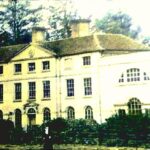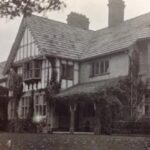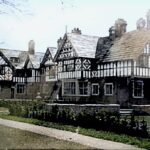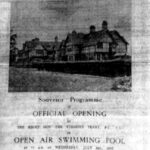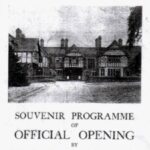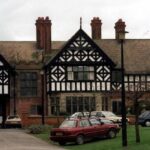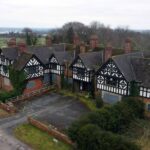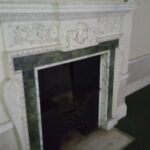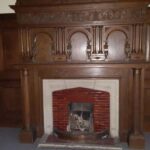Bryn Estyn
It is believed that a structure existed on the Bryn Estyn Estate since Tudor times, potentially serving as a farm linked to the Erlas Hall Estate southeast of the current Bryn Estyn Hall location.
Roger Davies of Erlas Hall owned the land until Williams Kyffin of Maenan Hall, north of Llanrwst, married one of the Davies daughters, transferring Bryn Estyn to the affluent Kyffin family.
In 1783, Sir Thomas Kyffin sold the land to Richard Myddleton Massie Lloyd, a textile merchant and banking pioneer in Wrexham. The prosperous Lloyd family, owners of estates like Plas Power and Plas Madoc, engaged architect Joseph Turner to design the initial Bryn Estyn Hall. In 1814, Major Sir William Lloyd inherited the property upon Richard Lloyd’s death, also serving as a magistrate and the High Sheriff of Denbighshire.
The collapse of Lloyds Bank in 1849 brought shame and financial concerns to the family. Major Sir William Lloyd passed away in 1857, buried in St Tudnos church on the Great Orme, Llandudno, known for being among the first Europeans to ascend a Himalayan peak. The estate did not immediately pass to Sir William Lloyd’s son George or daughter Mary, and the reasons for this are unclear, possibly tied to death duties or outstanding debts.
The house and its surroundings once again became part of the Plas Power Estate, owned by the Fitzhugh family. Emily Fitzhugh, who later married Captain Rumley Charles Godfrey (Her Majesty’s Indian Army), inhabited the estate. Rumley Charles Godfrey died in 1892, and the property passed to his son, Lieutenant Colonel Rumley Frederick Godfrey (Royal Welsh Fusiliers).
More than a decade after inheriting the house, Rumley Frederick Godfrey sold Bryn Estyn to Frederick William Soames in 1903. Soames, in turn, demolished the original structure and enlisted Liverpool architects Grayson & Ould to design the replacement, which stands to this day.
Bryn Estyn gained notoriety in the late 20th century due to its association with the Bryn Estyn Children’s Home and allegations of child abuse. The history of Bryn Estyn is closely tied to its role as a residential care facility for children, and the subsequent investigations and controversies have significantly shaped its legacy. Bryn Estyn Children’s Home closed in the early 1990s, and the site has since been repurposed. The history of Bryn Estyn is a sombre chapter in the broader context of child welfare and institutional care in the United Kingdom, emphasizing the importance of protecting vulnerable individuals and ensuring accountability within the care system.


